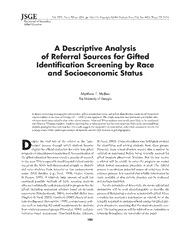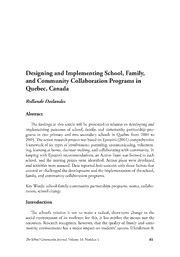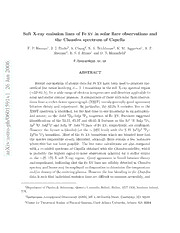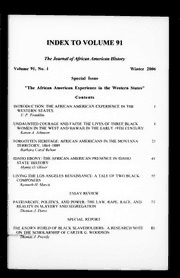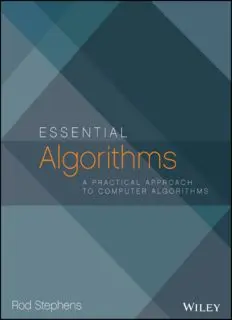
Essential Algorithms : a Practical Approach to Computer Algorithms PDF
Preview Essential Algorithms : a Practical Approach to Computer Algorithms
bindex.indd 05:47:54:PM 07/10/2013 Page 602 Essential Algorithms A Practical Approach to Computer Algorithms Rod Stephens ffi rs.indd 05:53:16:PM 07/10/2013 Page i Essential Algorithms: A Practical Approach to Computer Algorithms Published by John Wiley & Sons, Inc. 10475 Crosspoint Boulevard Indianapolis, IN 46256 www.wiley.com Copyright © 2013 by John Wiley & Sons, Inc., Indianapolis, Indiana Published simultaneously in Canada ISBN: 978-1-118-61210-1 ISBN: 978-1-118-61276-7 (ebk) ISBN: 978-1-118-79729-7 (ebk) Manufactured in the United States of America 10 9 8 7 6 5 4 3 2 1 No part of this publication may be reproduced, stored in a retrieval system or transmitted in any form or by any means, electronic, mechanical, photocopying, recording, scanning or otherwise, except as permitted under Sections 107 or 108 of the 1976 United States Copyright Act, without either the prior written permis- sion of the Publisher, or authorization through payment of the appropriate per-copy fee to the Copyright Clearance Center, 222 Rosewood Drive, Danvers, MA 01923, (978) 750-8400, fax (978) 646-8600. Requests to the Publisher for permission should be addressed to the Permissions Department, John Wiley & Sons, Inc., 111 River Street, Hoboken, NJ 07030, (201) 748-6011, fax (201) 748-6008, or online at http://www.wiley. com/go/permissions. Limit of Liability/Disclaimer of Warranty: The publisher and the author make no representations or war- ranties with respect to the accuracy or completeness of the contents of this work and specifi cally disclaim all warranties, including without limitation warranties of fi tness for a particular purpose. No warranty may be created or extended by sales or promotional materials. The advice and strategies contained herein may not be suitable for every situation. This work is sold with the understanding that the publisher is not engaged in rendering legal, accounting, or other professional services. If professional assistance is required, the services of a competent professional person should be sought. Neither the publisher nor the author shall be liable for damages arising herefrom. The fact that an organization or Web site is referred to in this work as a citation and/or a potential source of further information does not mean that the author or the publisher endorses the information the organization or website may provide or recommendations it may make. Further, readers should be aware that Internet websites listed in this work may have changed or disappeared between when this work was written and when it is read. For general information on our other products and services please contact our Customer Care Department within the United States at (877) 762-2974, outside the United States at (317) 572-3993 or fax (317) 572-4002. Wiley publishes in a variety of print and electronic formats and by print-on-demand. Some material included with standard print versions of this book may not be included in e-books or in print-on-demand. If this book refers to media such as a CD or DVD that is not included in the version you purchased, you may download this material at http://booksupport.wiley.com. For more information about Wiley products, visit www.wiley.com. Library of Congress Control Number: 2013941603 Trademarks: Wiley and the Wiley logo are trademarks or registered trademarks of John Wiley & Sons, Inc. and/or its affi liates, in the United States and other countries, and may not be used without written permission. All other trademarks are the property of their respective owners. John Wiley & Sons, Inc. is not associated with any product or vendor mentioned in this book. ffi rs.indd 05:53:16:PM 07/10/2013 Page ii About the Author Rod Stephens started out as a mathematician, but while studying at MIT, he discovered how much fun algorithms are. He took every algorithms course MIT offered and has been writing complex algorithms ever since. During his career, Rod has worked on an eclectic assortment of applications in such fi elds as telephone switching, billing, repair dispatching, tax process- ing, wastewater treatment, concert ticket sales, cartography, and training for professional football players. Rod is a Microsoft Visual Basic Most Valuable Professional (MVP) and has taught introductory programming at ITT Technical Institute. He has written more than 2 dozen books that have been translated into languages from all over the world. He has also written more than 250 magazine articles covering C#, Visual Basic, Visual Basic for Applications, Delphi, and Java. Rod’s popular VB Helper website (www.vb-helper.com) receives several mil- lion hits per month and contains tips, tricks, and example programs for Visual Basic programmers. His C# Helper website (www.csharphelper.com) contains similar material for C# programmers. You can contact Rod at RodStephens@vb-helper.com or RodStephens@csharphelper.com. iii ffi rs.indd 05:53:16:PM 07/10/2013 Page iii Credits Executive Editor Business Manager Robert Elliott Amy Knies Project Editor Production Manager Tom Dinse Tim Tate Technical Editors Vice President and Executive David Coleman Group Publisher Jack Jianxiu Hao Richard Swadley George Kocur Vice President and Executive Production Editor Publisher Daniel Scribner Neil Edde Copy Editor Associate Publisher Gayle Johnson Jim Minatel Editorial Manager Project Coordinator, Cover Mary Beth Wakefi eld Katie Crocker Freelancer Editorial Manager Proofreader Rosemarie Graham Josh Chase, Word One Associate Director of Marketing Indexer David Mayhew Robert Swanson Marketing Manager Cover Designer Ashley Zurcher Ryan Sneed iv ffi rs.indd 05:53:16:PM 07/10/2013 Page iv Acknowledgments Thanks to Bob Elliott, Tom Dinse, Gayle Johnson, and Daniel Scribner for all of their hard work in making this book possible. Thanks also to technical edi- tors George Kocur, Dave Colman, and Jack Jianxiu Hao for helping ensure the information in this book is as accurate as possible. (Any remaining mistakes are mine not theirs.) v ffi rs.indd 05:53:16:PM 07/10/2013 Page v Contents at a Glance Introduction xv Chapter 1 Algorithm Basics 1 Chapter 2 Numerical Algorithms 25 Chapter 3 Linked Lists 55 Chapter 4 Arrays 83 Chapter 5 Stacks and Queues 111 Chapter 6 Sorting 131 Chapter 7 Searching 163 Chapter 8 Hash Tables 169 Chapter 9 Recursion 185 Chapter 10 Trees 227 Chapter 11 Balanced Trees 277 Chapter 12 Decision Trees 297 Chapter 13 Basic Network Algorithms 325 Chapter 14 More Network Algorithms 355 Chapter 15 String Algorithms 377 Chapter 16 Cryptography 397 Chapter 17 Complexity Theory 419 Chapter 18 Distributed Algorithms 435 Chapter 19 Interview Puzzles 465 Appendix A Summary of Algorithmic Concepts 477 Appendix B Solutions to Exercises 487 Glossary 559 Index 573 vi ffi rs.indd 05:53:16:PM 07/10/2013 Page vi Contents Introduction xv Chapter 1 Algorithm Basics 1 Approach 2 Algorithms and Data Structures 3 Pseudocode 3 Algorithm Features 6 Big O Notation 7 Common Runtime Functions 11 Visualizing Functions 17 Practical Considerations 17 Summary 19 Exercises 20 Chapter 2 Numerical Algorithms 25 Randomizing Data 25 Generating Random Values 25 Randomizing Arrays 31 Generating Nonuniform Distributions 33 Finding Greatest Common Divisors 33 Performing Exponentiation 35 Working with Prime Numbers 36 Finding Prime Factors 37 Finding Primes 39 Testing for Primality 40 Performing Numerical Integration 42 The Rectangle Rule 42 The Trapezoid Rule 43 vii ftoc.indd 05:53:41:PM 07/10/2013 Page vii viii Contents Adaptive Quadrature 44 Monte Carlo Integration 48 Finding Zeros 49 Summary 51 Exercises 52 Chapter 3 Linked Lists 55 Basic Concepts 55 Singly Linked Lists 56 Iterating Over the List 57 Finding Cells 57 Using Sentinels 58 Adding Cells at the Beginning 59 Adding Cells at the End 60 Inserting Cells After Other Cells 61 Deleting Cells 62 Doubly Linked Lists 63 Sorted Linked Lists 65 Linked-List Algorithms 66 Copying Lists 67 Sorting with Insertionsort 68 Linked List Selectionsort 69 Multithreaded Linked Lists 70 Linked Lists with Loops 71 Marking Cells 72 Using Hash Tables 74 List Retracing 75 List Reversal 76 Tortoise and Hare 78 Loops in Doubly Linked Lists 80 Summary 81 Exercises 81 Chapter 4 Arrays 83 Basic Concepts 83 One-dimensional Arrays 86 Finding Items 86 Finding Minimum, Maximum, and Average 86 Inserting Items 88 Removing Items 89 Nonzero Lower Bounds 89 Two Dimensions 90 Higher Dimensions 91 Triangular Arrays 94 Sparse Arrays 97 ftoc.indd 05:53:41:PM 07/10/2013 Page viii
The list of books you might like

Do Epic Shit

As Good as Dead

Haunting Adeline

The Subtle Art of Not Giving a F*ck
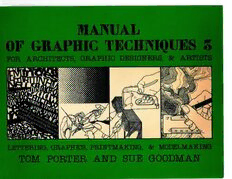
MANUAL OF GRAPHIC TECHNIQUES 3 (ic anon uploaded)

GB 1796-1: Tyre valves -Part 1:Clamp-in valves

ERIC EJ1097751: Student Services Support of Developmental Education

BY ORDER OF THE COMMANDER MAXWELL AFB INSTRUCTION 32-2003 42D AIR BASE WING ...

Cento Anni di Ricerca Petrolifera(1)

Live and let live

Structured glass-fiber catalysts
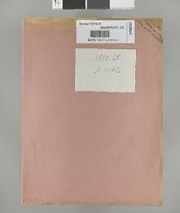
Vitis vinifera subsp. vinifera cv. Marselan
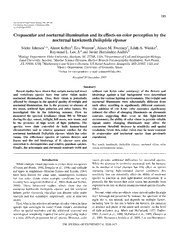
DTIC ADA519442: Crepuscular and Nocturnal Illumination and Its Effects on Color Perception by the Nocturnal Hawkmoth Deilephila elpenor

Bölgesel Gelişme ve Bölgeler Arası Gelişmişlik Farkları
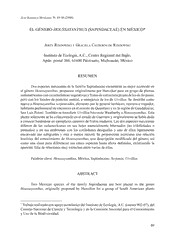
El género Houssayanthus (Sapindaceae) en México
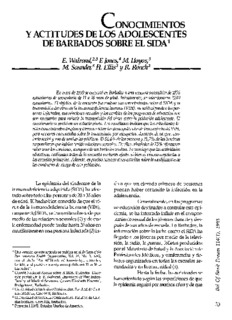
c onocimientos y actitudes de los adolescentes de barbados sobre el sida1

